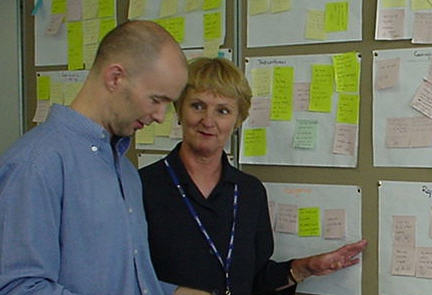Business requirements analysis gathers system requirements from business stakeholders' or sponsors' points of view. There is often input on how the system needs to work within the current and future business contexts, technology platforms and constraints. Frequently 'as is' and 'to be' process maps document system and user behaviors.
User requirements analysis gathers requirements from a user's point of view. It is concerned with what needs to be designed rather than how it is to be designed.
From a usability perspective, a primary objective of requirements analysis is the creation of user experience objectives. These are the critical objectives that the system needs to do to satisfy users and meet the specified business success metrics.
Analysis techniques include:
Contextual Enquiry/Site visit
A site visit gathers information about representative users in the context of their work environment. The enquiry gathers data about:
- tasks and workflow
- system usage
- usability issues
- user preferences.
This is one of the most beneficial usability tasks that can be done and informs all key design and evaluation activities.
Often a large amount of data is collected that needs to be sorted. A frequently used technique is called affinity diagramming.

Data analysis
»Top of page
Focus groups
A selected sample of users are involved in a group discussion about an existing or proposed product or system.
The workshop facilitator guides discussion using a list of pre-prepared questions to elicit user reactions to any issues and ideas that arise.
»Top of page
Business process mapping
Process maps provide a visual summary of how a function is or can be completed. Generally they take the form of flowcharts showing decision points and the primary and alternative ways of doing things.
»Top of page
|